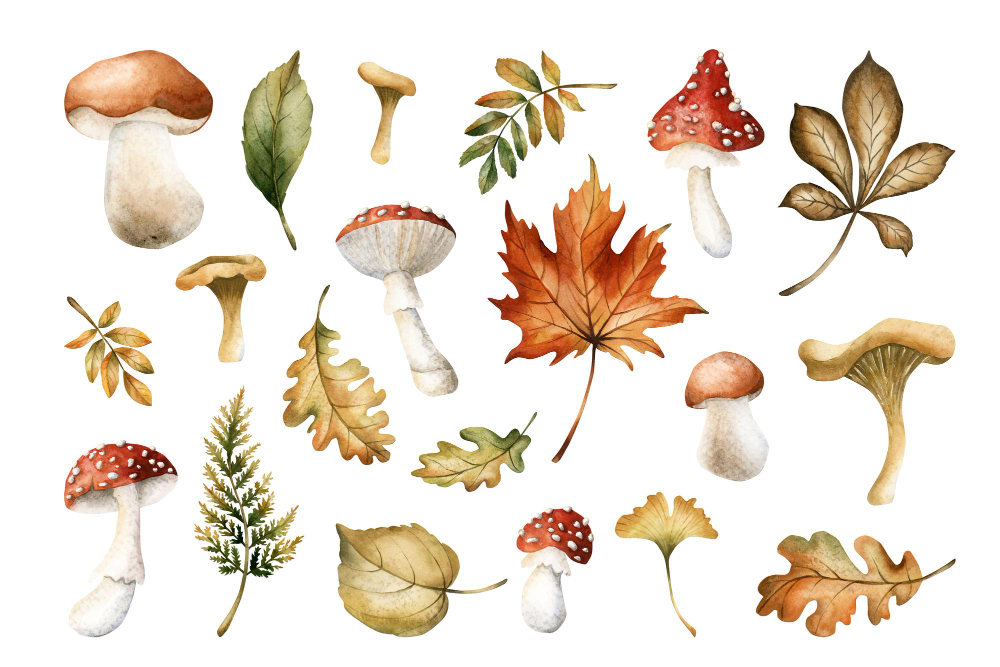Mushroom spores are the microscopic reproductive units of fungi, similar to seeds in plants. These tiny structures carry all the genetic material needed to grow into a full mushroom under the right conditions. Growing mushrooms from spores allows enthusiasts and researchers to observe and understand the fascinating life cycle of fungi firsthand.
Cultivating mushrooms at home or for research purposes offers several benefits, including learning about fungal biology, experimenting with different growth techniques, and gaining a deeper appreciation for the diversity of mushrooms. It can also be a rewarding educational experience, whether for scientific study, microscopy, or simply exploring the natural world.
It is important to note that mushroom spores are intended strictly for educational and research purposes and are not meant for consumption or recreational use.
Understand Mushroom Spores
Mushroom spores are tiny reproductive units that allow fungi to reproduce and spread. Unlike plant seeds, spores are microscopic and do not contain stored nutrients for immediate growth. Instead, they rely on a suitable environment and a prepared substrate to germinate and develop into a mature mushroom. This fundamental difference makes spores unique and fascinating for study and cultivation.
There are many types of mushroom spores commonly used for cultivation, each corresponding to different mushroom species. Some are preferred for their ease of growth, while others are valued for their unique characteristics. Choosing the right spores is crucial for successful cultivation, and many enthusiasts utilize premium mushroom spores for microscopy and educational purposes.
Spores play a crucial role in determining the growth pattern, size, and overall characteristics of the mushrooms. The quality and viability of spores directly influence how quickly mycelium develops, how healthy the mushrooms become, and the overall yield. Understanding spores is therefore an essential first step for anyone interested in cultivating mushrooms for research or educational purposes.
Materials Needed for Cultivation
To successfully cultivate mushrooms from spores, it’s important to gather the right materials. Essential tools include:
- High-quality spores
- A suitable growth substrate
- Containers for cultivation
- Gloves and sterilization equipment
Choosing the right substrate is crucial, as different mushroom species thrive on different growth mediums, such as grains, sawdust, or composted material. For beginners, using study-grade mushroom spores ensures reliable results and a smooth learning experience.
Prepare the Substrate
The substrate provides the nutrients mushrooms need to grow. It must be properly sterilized to eliminate contaminants. Common methods include pressure cooking or steaming. After sterilization, the substrate should cool completely before spores are introduced. A clean and controlled environment is essential to prevent contamination.
Inoculate Spores
Inoculation is the process of introducing spores to the substrate. Using sterile tools and gloves, spores should be evenly distributed to maximize growth potential. Many beginners start with microscopy mushroom spores, which are easy to handle and ideal for educational purposes. Proper technique at this stage is key to successful colonization.
Incubation and Growth
After inoculation, the substrate is stored in a controlled environment with the right temperature, humidity, and minimal light exposure. During incubation, the spores germinate and form mycelium, the vegetative part of the fungus. Monitoring for healthy growth and spotting contamination early is important for successful cultivation.
Fruiting the Mushrooms
Once the substrate is fully colonized, conditions are adjusted to trigger fruiting. This often involves increasing humidity and light while maintaining a clean environment. Mushrooms will begin to form and grow over several days. Regular monitoring ensures the best yield and quality.
Harvesting and Storage
Mushrooms should be harvested at the right stage for optimal quality. Carefully cut or twist the mushrooms from the substrate to avoid damaging the mycelium. Harvested mushrooms can be used for microscopy, educational demonstrations, or research study. Proper storage in a cool, dry place extends shelf life for study purposes.
Safety and Legal Considerations
It is critical to remember that spores, including popular strains like Golden Teacher Mushroom Spores are strictly for research and educational use. They are not intended for consumption. Always follow legal guidelines in your region, maintain hygiene during cultivation, and avoid using mushrooms for recreational purposes.
Conclusion
Cultivating mushrooms from spores offers a fascinating and educational journey into the world of fungi. By understanding the role of spores, preparing the appropriate materials, carefully inoculating the substrate, and monitoring growth through incubation and fruiting, beginners can observe the full life cycle of mushrooms. Each step provides valuable insights into fungal biology and cultivation techniques.
Approaching this process with safety and responsibility is crucial. Utilizing spores intended for educational and research purposes, and adhering to proper hygiene and legal guidelines, ensures a productive and risk-free experience.
As interest in mycology grows, it’s beneficial to stay informed about the latest advancements in the field. Exploring emerging trends and technologies in mycology can provide a deeper understanding and open new avenues for research and cultivation. With patience and attention to detail, anyone can embark on this educational journey, expanding their knowledge and appreciation of the fascinating world of mushrooms.

